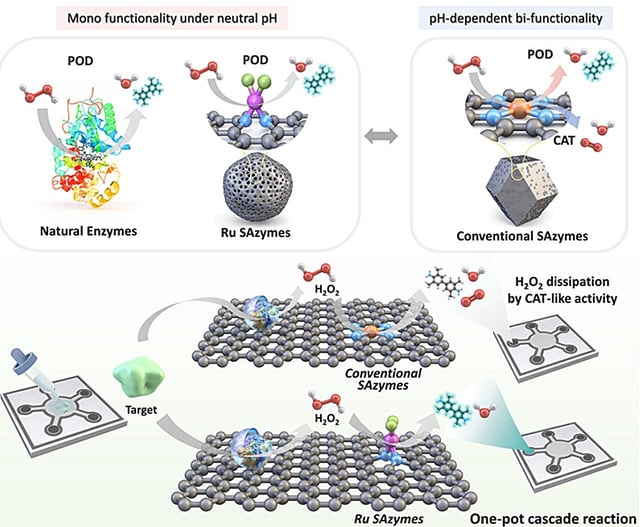Overview
- KAIST researchers in collaboration with Seoul National University and Gachon University engineered a single-atom ruthenium catalyst with three-dimensional chlorine ligands to fine-tune reaction selectivity at the atomic level.
- Experimental results demonstrated the nanozyme delivers over 38-fold improvement in selectivity compared to existing inorganic catalysts while maintaining enzyme-level sensitivity and speed under neutral pH.
- By integrating the catalyst and oxidase into a paper-based microfluidic sensor, the team achieved simultaneous colorimetric detection of glucose, lactate, cholesterol and choline in blood, urine or saliva within three minutes.
- The instrument-free platform requires no pH adjustments or bulky equipment, offering an affordable and stable point-of-care diagnostic tool for use outside traditional laboratory settings.
- The structure-function catalyst design approach can be extended to other metal-based reactions requiring high precision, paving the way for broader accessible diagnostics.

